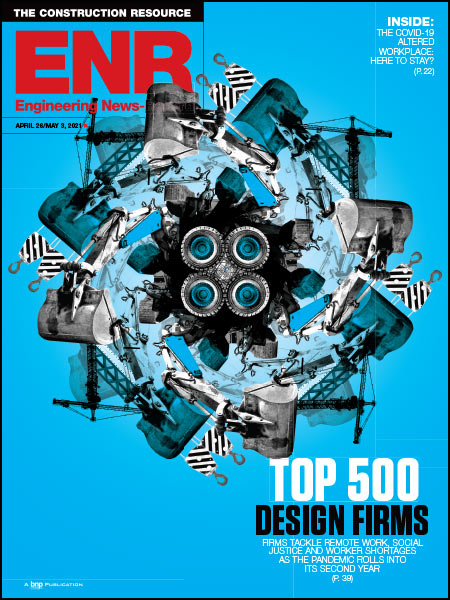A popular northern Nevada commute between Reno and state capital Carson City recently improved thanks to the new Interstate-580 extension. However, construction of the $445-million project was no easy task.
Previously, the old U.S. 395 south was the only option available, but the undivided, four-lane highway was susceptible to gridlock, high winds, flooding and head-on collisions. The new 8.5-mile, six-lane I-580 provides an alternate route from Mt. Rose Highway to the Bowers Mansion cutoff.
"The old highway 395 was the only all-weather route from South Lake Tahoe, Douglas County, Carson City and Lyon County to the Reno metropolitan area," says Rudy Malfabon, Nevada's transportation director. "The new highway eliminates one of the state's worst safety hazards by replacing a dangerous road used by 40,000 motorists a day."
The extension diverts up to 70% of the traffic through Pleasant Valley while simultaneously improving safety and reducing travel time.
The project received vociferous feedback from residents and businesses determined to maintain the area's scenic beauty, resulting in a freeway alignment that hugs the 5,000-ft-tall southern mountain range and includes $10 million in eco-friendly landscaping and replanting. The unobtrusive appearance entailed heavy engineering with nine bridges and 5 million cu yd of tricky excavation.
"Alignment selection was very involved, with a one-year public involvement program with stakeholders including area homeowners," says Cynthia Potter, project manager with lead design firm CH2M Hill. "It was a context-sensitive design that took into consideration social and economic benefits, helping the project fit into its surroundings."
The freeway consequently travels through rugged terrain that required 18 months of continuous drill-and-shoot blasting to carve out the mountainside. Large dozers, articulating trucks and backhoes with hammer attachments broke up rock, most of which was screened and reused on the project. There were 40 pieces of earthmoving machinery at work at any given time. The biggest roadway cut, nicknamed "the Matterhorn," required 1 million cu yd of material removal, or enough to fill 100,000 trucks.
Extreme Crossings
The project's largest crossing, the Galena Creek Bridge, spans a wildlife-rich creek and former mine. The bridge is sensitive to its surroundings with a whopping 689-ft center span arch that visually compliments the curves of the neighboring hills. But erection of the 1,722-ft-long, 295-ft-tall cathedral arch structure posed a daunting challenge for bridge contractor C.C. Myers Inc., given the high winds and dizzying heights. The solution came from temporarily elevating the creek floor by using crushed aggregate, which helped avoid settlement.
"We wanted to use conventional falsework, and we had to move 2 million cu yd anyway," says Tommy Fisher, president of general contractor Fisher Industries. "By building atop the natural creek, we created a safer work environment while also building a temporary road that allowed our trucks to still move dirt."
The contractor created a 44-ft-dia, 22-ft-tall, 3-ft-thick shotcrete reinforced temporary bridge arch with custom-fabricated interior slip-form for 40-ft sectional pours. A dozen 85-ton computer-controlled strand jacks lowered falsework for the pair of 62-ft-wide, three-lane parallel bridge structures that meet in the middle. The jacks hung off the bridge itself since no drilled holes were allowed in the roadway deck, while falsework was assembled piecemeal on the creek floor and lifted into place with crawler cranes that were 30 ft away from the creek due to environmental concerns. A $2-million batch plant was set up on site, with 30 mixer trucks and two 200-ft-tall pump trucks to place concrete.
Yet the bridge is just one part of a larger project that includes, among other things, three miles of asphalt frontage roads, 26,246 linear ft of mechanically stabilized earth walls, 14 miles of drainage pipe and 25 miles of concrete barrier rail. The years-in-the-making I-580 freeway extension marks the largest project in Nevada Dept. of Transportation history.






Post a comment to this article
Report Abusive Comment